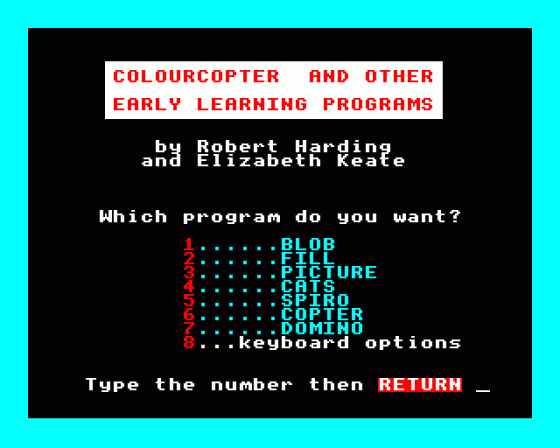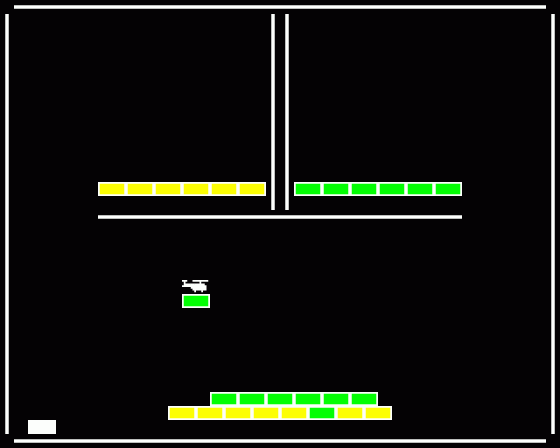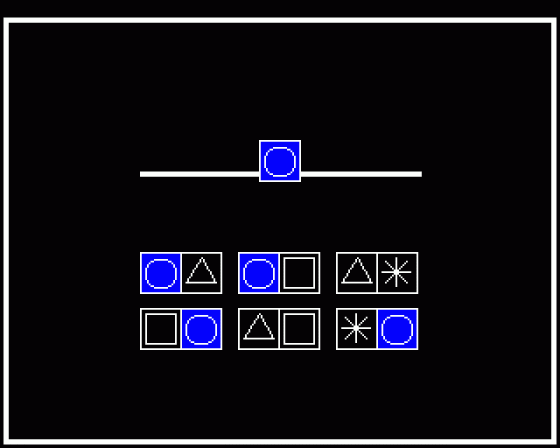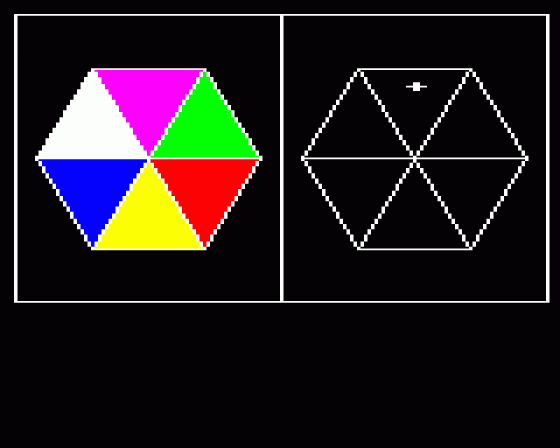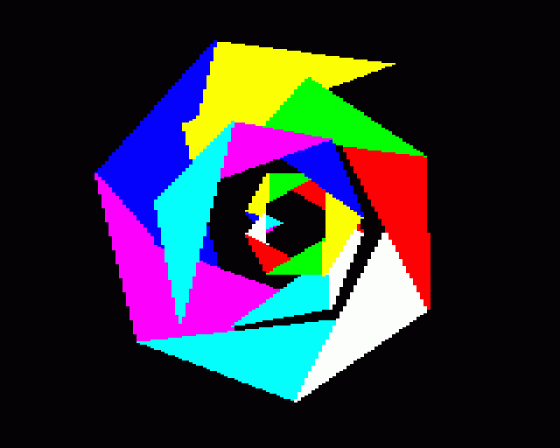This is a set of seven programs to stimulate early learning with 3 - 6 year olds. It is aimed chiefly at the pre-school child and will, therefore, be of greatest benefit to the home user and/or any nursery/playgroup that has a micro. Having said that, it'll have a place in any infant reception class where the children haven't had the benefit of such experiences before coming to school, whether they've been offered via the micro or the more conventional methods.
Certainly, most of the programs offer activities which in pre-micro days would have been provided - and still are - with card and coloured paper and lots of teacher-parent time, but most parents of pre-school children won't have the expertise to provide the variety of activities in these programs. They offer an early opportunity to introduce youngsters to the micro in an enjoyable way, so if there's one in the house, then these programs could keep the youngsters gainfully employed on many an occasion, and offer lots of opportunity for discussion if Mum, Dad or older brother/sister can find the time to play along.
Once the programs have been set-up for the child, most of the operations are made via the function keys (number keys on the Electron) - function key strips are provided for most games - or a POP-IT keybaord (a small handheld device with nine bubble-capped keys, which plugs into the User Port of the BBC). A Concept Keyboard option would have been welcomed by those who have access to one. (By chance I discovered that the number keys also operate the program on the BBC, so it won't take a lot of work to develop a CK version if you have access to STARSET.)
While many of the skills learned in the early programs are needed for some of the later ones, the handbook rightly suggests that the order that suits your child(ren) is the right one, e.g. all the sorting activities before embarking on reading skills, or whole words before initial letters.
Most of the programs contain several games, which are variations on a similar theme, and are selected from the "games menu". This appears after the program has been chosen from the main menu. Other options include sound on/off and, in some, choice of colours to be used. Blob is a simple program to match colours, letters and words and introduces the use of function key strip/overlay and keys. The five games progress through colour only matching, initial letter/word prompts, or initial letter/word prompts after two tries. Blob's colour, word or letter on screen are matched with the function key strip. I particularly liked the colour options, which permitted the selection of any two or more from the five colours available while pressing RETURN gives a random selection. I didn't like the form of the letter "w" used throughout these programs.
Fill offers the same five games as Blob. Three outlines of 3, 4 or 6 areas can be filled using any combination of 3, 4 or 6 colours respectively - again user/random choice. The coloured shape appears on the left hand side of the screen and this has to be copied onto the uncoloured pattern on the right hand side, encouraging left to right eye scanning.
Picture introduces some of the common words selected from lists of vocabulary known to be used frequently by young children. Game options allow picture to picture, letter to letter, word to word matching, and the last two with prompts.
Cats is an on-screen matching program. Three cats have to be matched by the same coloured hats. This is achieved by using the cursor keys for up and down, and right and left movement.
Spiro offers four games: to match the function keys with any nine characters (previously selected), match upper or lower case characters with the keyboard, or make your own spiro pattern by typing in four numbers. In the first three options, which aim at making the user familiar with the computer keyboard, the time taken by "the reward", i.e. the music and the spiro pattern, appeared to be out of proportion to the time spent finding the keys! While the youngster will no doubt enjoy the patterns, I must admit I'm not sure I appreciate the significance of the last option to this age group, except for drawing pretty patterns, or am I looking for too much?
Copter. Youngsters will enjoy this program particularly. In Game 1, they have to sort bricks of two colours - no colour options given in this program unfortunately. The helicopter flies to a brick and waits for the matching function key to be pressed. It will then carry the brick to the correct pile and drop it before going back for another. Game 2 uses the arrow keys to tell the helicopter where to fly, while Game 3 introduces a new skill. They have to use two more keys to pick up and drop the bricks. As they can drop them anywhere - as long as they're on the correct side! - they can enjoy creating their own structures.
Domino offers four games using either colour or shape matching. The options allow for a simple bringing together of all the same colour/shapes, matching colour/shapes and moving the dominoes about using the pick up and drop system as in Copter.
The program notes give a clear indication of the aims of each program, and some ideas that can be used to develop the skills practised. I'd be very pleased if all out youngsters started school with these skills!
The POP-IT keyboard and the overlays are available from ESM at £19.95 and £1.60 plus VAT respectively.


 1st September 1985
1st September 1985